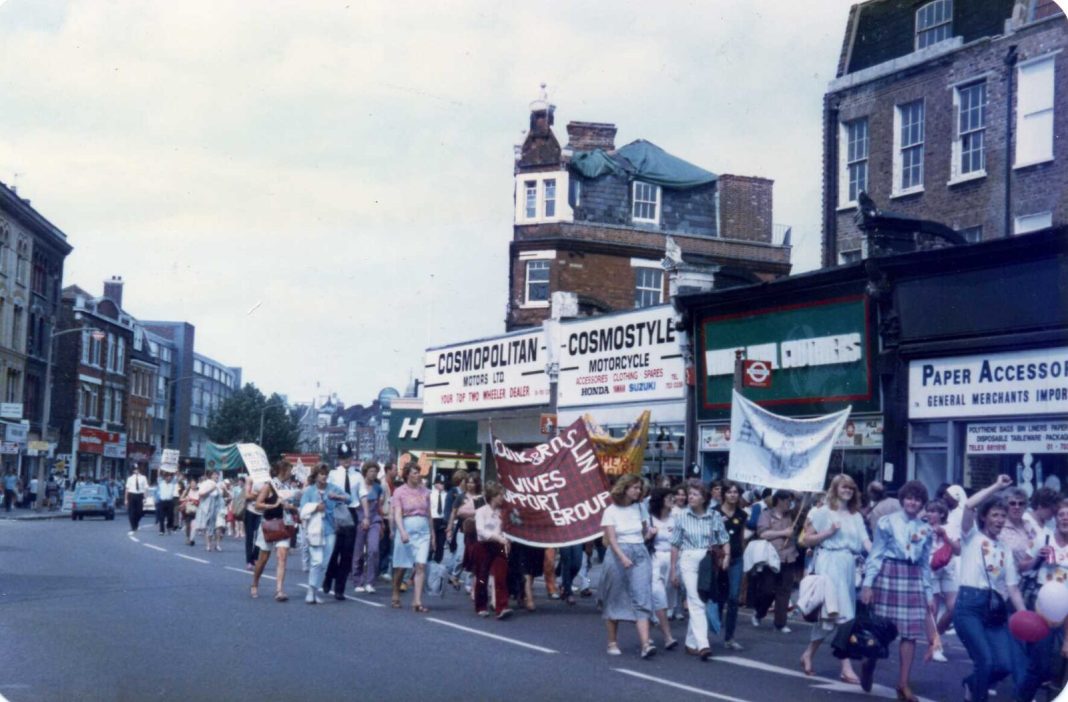‘Humphrey: ‘If the right people don’t have power, do you know what happens? The wrong people get it. Politicians. Councillors. Ordinary voters.’
Bernard: ‘But aren’t they supposed to, in a democracy?’
Humphrey: ‘This is a British democracy, Bernard!’
― Yes, Prime Minister (1988)
A Labour government that doesn’t know where it stands; a populace increasingly wearied from the status quo; a firebrand ready to swoop in from the right and tear up everything we thought we knew. In This House, the Callaghan government of the 1970s faces many of the same uncertainties that characterise British politics 50 years later. However, while the foibles and frailties of Westminster are played out onstage to great effect, James Graham’s real triumph comes in what he leaves unsaid about the last knockings of Old Labour.
The plot is ambitious from the outset. Deputy Chief Whip Walter Harrison (Reece Dinsdale) and his Labour colleagues are tasked with pushing through the government agenda in spite of their parliamentary minority, and the Tory whips have to oppose them. Despite the seemingly simple premise, the arcane, uncodified conventions of British political life generate a remarkable amount of tension. This is helped by Graham’s subversion of the typical perspective on politics. Instead of guiding the course of events, party leaders and Cabinet ministers are no more than pawns for the parliamentary whips, who must maintain cohesion within and between parties at all costs.
At the very heart of the action is the informal practice of ‘pairing’ – an agreement between the two major parties dictating that ill or absent members from one side are made up for by voluntary absences on the other during any given vote. At the very end of the first act, the Opposition refuses to grant pairs, only relenting when a Labour MP suffers a fatal heart attack mid-speech – the line “Nobody dies in the Palace of Westminster” turning from a hoary politician’s in-joke to a cry of outrage. Even after that, the casualty list nearly lengthens. ‘Doc’ Broughton (Christopher Godwin), dying of bronchitis, has to be talked out of coming down from Yorkshire for the climactic no-confidence vote – and it’s his absence that ultimately forces Labour out of office, after they lose the vote by one.
Perhaps the most incredible thing about this desperation is its basis in fact. John Stonehouse (Andrew Havill) really did fake his own suicide while a sitting MP; Walter Harrison, trapped in the door while entering a committee room, indeed proved decisive in a vote won 22 and ¾ for to 22 against; future Conservative luminary Michael Heseltine (Mathew Pidgeon) did famously swing Parliament’s ceremonial mace at the government benches over a defeat on the Aircraft and Shipbuilding Industries Bill. Integrating all these episodes into one coherent narrative still seems a considerable task for any playwright – but Graham, who has since won two Olivier Awards, is equal to it.
All these individual political skirmishes are set against the backdrop of the collapsing post-war consensus, a period of agreement between the major parties on key social and economic issues. On stage, the growing party divisions are personified by Humphrey Atkins (Julian Wadham), Conservative Chief Whip, and his prophecy that “We are not built for cooperation.”
Of course, it’s not all so smooth. Graham leans heavily into old stereotypes for comedy value: Stuck-up, aristocratic Tories trading barbs with uncouth Labourites, vowel sounds a greater sign of party division than policies. Old hat as it is, though, the script is witty enough to carry the day, in combination with some inventive staging. The warm lighting and sparse set take the audience inside the whips’ offices, and the live band – a pleasant surprise – offers period- and plot-appropriate covers from David Bowie’s Ziggy Stardust album, lending this particular production a slightly surreal element.
The key figure driving this drama, though, is barely even mentioned. Margaret Thatcher’s name only appears at the very end of the play, in a pre-taped radio broadcast; before then, she remains ‘the Lady’, or ‘the Member for Finchley’. After all, she was never supposed to be that close to power – not in the 1975 party leadership contest, where nobody gave her a chance, and “not in her lifetime”, as she said so memorably in a 1973 interview. In the play as in reality, she begins as a non-entity and ends up an almost totemic figure.
Her eleven years in power marked the longest tenure of the century. Social conservatism, private industry and a focus on public order replaced the status quo of permissiveness, government spending and workers’ rights – 25 years of convention undone at a stroke. Throughout the play, Harrison and Atkins both prove themselves to be skilled political operators, but even these old stagers are taken by surprise at the new Conservative vision.
Graham’s refusal to identify Thatcher is more than a dramatic conceit, it’s a portent of doom. Her predecessor Ted Heath is referred to by name – Thatcher isn’t, because she doesn’t have to be. For anyone of a similar background to Graham, the scars are still there. A cursory look at male suicide rates in former mining areas, or unemployment figures in those areas left to ‘managed decline’, provides a clear enough picture. It says everything about Thatcherism’s impact on the country that 40 years after the end of the miners’ strike, Graham’s play can build its entire tension around her without saying her name.
James Graham’s This House premiered at the National Theatre from 2012-13, directed by Jeremy Herrin. This performance is available online for a fee.


